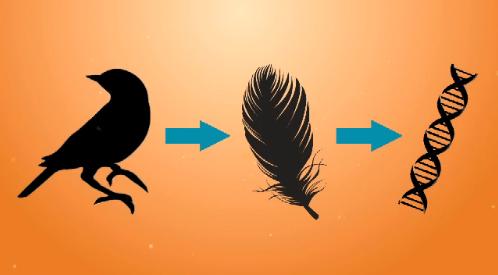Traditional Sex Identification Methods VS DNA Sexing Test
Traditional Sex Identification Methods VS DNA Sexing Test Several traditional sex identification methods are still used nowadays as an alternative to DNA Sexing Test. Nevertheless, all those methods do not offer enough reliability and, in many

Traditional Sex Identification Methods VS DNA Sexing Test
Several traditional sex identification methods are still used nowadays as an alternative to DNA Sexing Test. Nevertheless, all those methods do not offer enough reliability and, in many cases, it is necessary to wait until the bird has reached maturity (within 10 months-1 year) to use them. Among the different species of Lovebirds, only a few of them show sexual dimorphism (you can tell their sex just looking at the color of the plumage), the rest of them do not show any sexual dimorphism (we cannot determine their gender as they present no physical differences between sexes).
The species with no sexual dimorphism are the following: fischeri, personatus and roseicollis; the three more popular species. Lilianae and nigrigenis species also show no external differences between sexes. On the other hand, the species that does show sexual dimorphism are: taranta, pullarus and canus.
Why is it important to know the sex of your lovebirds?
There are several reasons why we would want to know the sex of our lovebird. Either for giving our lovebird a name (which might be not so important for some people, but it is if you want to bond with your pet) or in the case you want to get a couple to breed. It also can help us in case of health problems. For instance, I have a DNA sexed female lovebird, so I know that when she is in heat she will usually lay not fertile eggs.
Knowing her sex helps me to be more alert for avoiding egg binding and easily recognize its symptoms. Besides, during breeding season I also need to adapt the cage and the diet of my female lovebird. Anything that might seem like a nesting area and some foods like egg food or germinated seeds will prompt her to go into heat.
Traditional sex identification methods
Width of the pubic arch
We can touch VERY GENTLY the hip bones of our birds, located above the cloaca. If your lovebird is a female, its hip bones should be separated and if they are close together your bird is probably a male. But this method is not very reliable, especially if you do not have another bird to compare the hip bones with. Besides, this can only be checked when the bird is sexually mature, so apart from the fact that this method is not very effective, it can be too late anyway.
The size of the bird
Females tend to be bigger than males.
The size of the head
The shape of the head of female lovebirds is more rounded.
Behavior
Females are more territorial than males and they become very aggressive during the breeding season. They will keep spreading their wings and lifting their tails all day long. But males might copy this behavior leading to misunderstandings.
Female Fischer’s lovebird in heat. “Spreaded wings”
Males regurgitate food to feed females and make a kind of “dance”, but it seems that also females can make it, so it is not a reliable method either.
DNA Bird Sexing Method
DNA sex determination being the most reliable method gives an accuracy rate greater than 99.99%. This test is performed in specialized laboratories as BBI and basically what we do is analyzing the feather, blood or eggshell samples to determine if your bird is a male of a female.
DNA extraction from feathers
This method has become widely spread thanks to its low cost, reliability, efficacy, and quickness, besides it is not harmful or invasive for animals. Here you can see a video tutorial about how to collect the feathers to send them to our laboratory:
Method of DNA Bird Sexing Test
For being completely sure of the sex of your lovebird (or any monomorphic bird) and for knowing how to satisfy its needs, I would personally recommend getting your bird DNA tested. Even if you own a couple of budgies and they have chicks, you would not know their sexes after 6 or 8 months after hatching. DNA sexing tests have such a low cost that it is advisable to sex them using this method. You can acquire in our shop.
By Elena Fernández
Remember that at BBI Laboratories we are specialists in DNA sexing of birds and detection of bird diseases. You can also follow us on our main social networks (Facebook, Twitter, Instagram) where we share relevant information about our activity and the world of birds.



Pingback:7 Ciri Lovebird Jantan Dan Betina Beserta Gambar, Video - avesnesia.com July 8, 2021